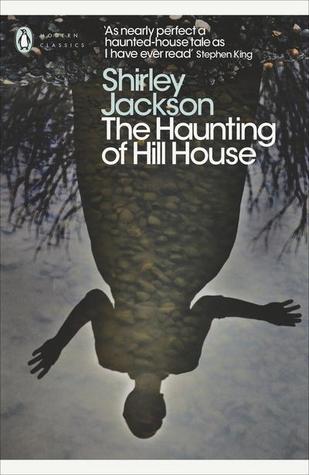Eleanor Vance is a lonely woman of 32. The only people she knows are her obnoxious sister and her equally nasty brother-in-law. Her mother, an ill but cross woman has just died after eleven long years of disease. Having nursed a sick patient within the confinement of her house for over a decade, Eleanor is now a shy recluse, cut off from the rest of the world.
Her depression comes to a halt when she receives an unexpected letter from a certain Dr. Montague. Dr. John Montague is a professor of Philosophy, who dabbles at supernatural studies. For long he was looking for a haunted mansion to conduct his experiments, and finally chanced upon Hill House, located far away from city-life, near a small village named Hillsdale. To assist him in his work, he is looking for volunteers with prior experience in paranormal activities, and Eleanor is one of his candidates.
Eleanor accepts the invitation immediately. Packing her minimal belongings in a box, she drives away, following the careful instructions in Dr. Montague’s letter. On her way, her mood livens up, as she passes by beautiful cottages and mansions, hoping someday she would buy one for herself and live a peaceful life, far away from her obnoxious family. But this joy is short-lived. The moment she arrives at her destination and sets her eyes on the mansion, Eleanor’s happiness seeps out, and she realizes that coming here was a mistake. Hill House, hideous with an ominous countenance, stands like a monster against the hills.
Soon, she is joined by Theodora, a cheerful young woman, Dr. Montague himself and Luke Sanderson, the young heir. Luke is here to supervise the investigation on behalf of his aunt who is the current owner of the mansion. The four of them meet and greet, and instantly strike a chord with each other. After a sumptuous dinner, they gather at the parlor, and Dr. Montague narrates to them the background of the House: the tragic stories of Hugh Crain, the original builder, and subsequent owners and tenants who came to live there.
The four of them await anxiously in silence for something to happen, but to their surprise, nothing unnatural catches their attention. Instead, they start warming up to the House, their comfort accentuated by the timely, delicious meals served by the robot-like Mrs. Dudley.
Then comes the second night, and Hill House begins to flex its muscles: Unnatural cold spots, banging at doors which only the women can hear, a black animal running around the house which only the men can see, letters written on wall with blood, etc. Eleanor is especially disturbed by the occurrences. It appears as though the House has singled her out as its prey. If this isn’t enough, a mysterious bi-sexual love triangle develops between Luke, Eleanor and Theodora, where both women are shown to be attracted to Luke as well as to themselves. What happens next? Read the book to find out…
It is said that author Shirley Jackson led a very unhappy, lonely life, emotionally suffocated by the duties that she was expected to follow on account of being a woman and wife. Eleanor’s loneliness and hatred towards her own family may have been a reflection of the author’s own agony. We observe this in Eleanor who is terrified of Hill House, and yet at the same time, does not want to leave it. Because this House – cursed though it might be – is the road to her freedom from her family.
Barring the basic premise, the plot of The Haunting of Hill House is very different from the Netflix show of the same name. There are no manifestations of ghosts like in the series. Unlike most other “haunted-mansion” movies like Amityville Horror, Conjuring, etc, there are no backstories as such either. In fact, if I have to be very honest, there isn’t anything particularly terrifying in the book. Then what makes it so famous? So iconic?
Shirley Jackson doesn’t tread the clichéd path; instead, she plays around with the psychology of the characters. Many things are left (deliberately) obscure. One very interesting aspect of The Haunting of Hill House is, it is written from the perspective of the most emotionally vulnerable and unreliable person of the four main characters: Eleanor. The emotional instability of the main narrator heightens the ambiguity of the supernatural elements: were they real or her imagination? It is this spine-chilling uncertainty that makes the novel very different from most other horror stories, and renders it its classic status.
Particularly noteworthy are the character sketches of Theodora and Eleanor, and their unique equation that changes with the passage of time. Journeys end in lovers’ meeting – this verse from a song is repeated strategically throughout the novel, foreshadowing the dark future of Eleanor. But who is this lover? Luke? Theodora? Or someone or something else?
The greatness of the novel is, the story never really ends at the end. Even after it is over, we are left pondering over a hundred questions:
Was the Hill House really haunted? Or were the manifestations more in the minds of the protagonists? Or did the House actually have a mind of its own? Was there indeed a poltergeist in the house? Or was it one of the inmates? Did the House really prey on Eleanor? Or was she a mental patient?
Jackson doesn’t believe in giving straight answers; instead, she compels us to ponder over the incidents, even re-read the book if needed, and explore the nuances and possibilities. Because, in Jackson’s dark, creepy world, anything is possible.
My rating: 4.5/5.
